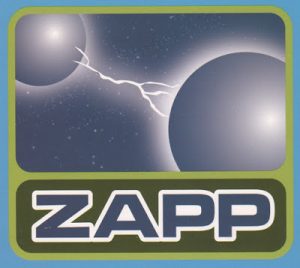
It’s hard to believe that the once-ubiquitous slide carousel—that round tray of 80+photographic slides—epitomized new technology, but when the Eastman Kodak Co. introduced its Carousel Projector in 1961, it revolutionized how information was shared.
Fast-forward 40 years to Kodak’s decision to discontinue its production in 2004, an announcement that shook the arts world, which for years had used ranks of projectors to assess, describe and judge artworks.[1]
Radical shifts in technology marked the beginning of the millennium, but WESTAF had already stepped into the fray with ArtistsRegister.com, which provided a platform for multiple new projects, including its most enduring software program, ZAPP, short for ZAPPlication. ZAPP lets artists apply for free to multiple festivals and events via a single website, while providing a more efficient way for art shows, fairs and festivals that license the software to manage their application and jury processes online.[2]
ZAPP’s origins lie in 1999, when WESTAF met with members of the National Association of Independent Artists (NAIA) and several major art fairs to talk about developing a web-based system that would allow artists to apply to a variety of venues online. After several years of planning, research and meetings, in March 2004 WESTAF—in collaboration with NAIA and 10 arts shows—began development of the software system that evolved into ZAPP.
Via ZAPP, art shows, festivals and fairs can post their events in one place, attend to all the administrative details, and allow juries to score their decisions online, no slide projectors in sight. Artists, meanwhile, can apply to as many of these events as they like, uploading up to 100 digital images, saving them time and money, no stamps needed.[3]
Coordinating such an ambitious project among so many parties tested WESTAF’s mettle to the fullest. First up, it contracted with BrownRice Internet, Inc. to develop the code and database, with WESTAF, the NAIA and 10 arts festivals each contributing funds. WESTAF retained a 51 percent interest, responsible for creating an end-product that met everyone’s needs. Once launched, WESTAF was in charge of licensing, installation and customer service.[4]
Over the years, ZAPP has remained WESTAF’s tech leader, providing administrative software to legions of art fairs and festivals, while also serving the larger nonprofit community with a reliable product that simplifies the backroom processes of producing such events.
[1] “A Brief History of Slide Projectors” Kodak. Accessed Jan. 17, 2019. resources.kodak.com/support/pdf/en/manuals/slideProj/history.pdf
[2] “Overview of the Arts Shows Software Project,” 2004. WESTAF. 1.
[3] Ibid. 1-2.
[4] “Contract: Final Subscription Agreement,” Working Draft. Memo & contract. Nov. 2, 2004. 33-40.




